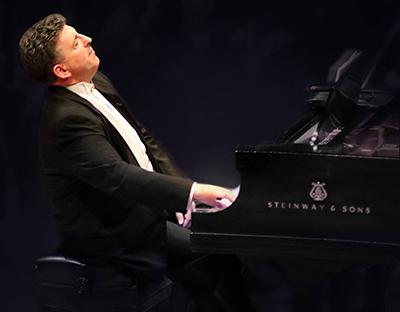by Tom Wachunas

As this concert so wondrously demonstrated, an orchestra as sublime as the CSO is itself a carefully constructed mode of transport. Call it a well-traveled vessel, amply fueled by a composer’s art, with performance flight plans navigated by the always sure hand of the conductor at the helm, Gerhardt Zimmermann.
For all its surprising brevity, the evening’s opening selection, Starburst, lived up to its name in captivating fashion.
Written for string orchestra in 2012 by American composer Jessie Montgomery, this single-movement work is a scintillating burst of her imagination, envisioning the explosive arrival of new stars in a galaxy. The music is a fast and complex progression of changing aural colors, blending sweet, fleeting melodies with brisk, emphatic rhythm variations. Montgomery has called it “…a multidimensional soundscape.” Through all their adroit gliding and sliding, and their crisp staccato plucking, the CSO strings soared with remarkable alacrity.
The next work on the program was Joseph Haydn’s light-hearted 1777 Overture to the opera buffa, Il Mondo della Luna (The World on the Moon). The raucous comedy tells the tale of a rich, gullible old man who loves astronomy, and who refuses to let his two daughters marry the penniless boyfriends they love. So the couples devise a devilish theatrical scheme to convince the old man that he’s been transported to the moon, where he meets the emperor and consents to his daughters’ marriage to members of the lunar court. The orchestra was an exuberant embodiment of the music’s symphonic thrust, imbuing it with a spirit of frolicsome majesty.

Perttu’s theme and labyrinthine variations were inspired by his research into the physical properties and conditions unique to seven planets (Earth not included) as described by current science. His music possesses an uncanny acuity for translating visual and tactile phenomena into palpable realities in themselves, endowing the work with a phantasmagorical dimensionality. Through it all, the orchestra is much more than an echo or passive background presence. Every section is called upon to be in constant, active and loud dialogue with the soloist, and the ensemble here rose to the conversation with dramatic, even startling power.
What magic this union was! If the orchestra could be considered as so many celestial bodies, Jeffrey Biegel’s playing was their collective heartbeat. And ours. His technique was a dazzling defiance of gravity, a life-affirming pulse that brought a sense of intrepid dancing, or relentless marching through this journey. While one hand constantly articulated a spirit of prowling and searching through rapid scales and arpeggios with crackling precision, the other, often simultaneously, pounded out bright exclamatory chords, as if declaring or celebrating the discovery of an immense new spectacle.
Biegel was equally brilliant in his return to earth, as it were, when performing Chopin’s Andante Spianato and Grande Polonaise Brillante. While the orchestra’s role in this work is a relatively quiet one, the ensemble was nonetheless exquisite in its poetic filling-out of harmonies and colors against the mesmerizing sparkle of Biegel’s bravura.
The evening concluded with yet another ascent to breathtaking musical heights in Mozart’s Symphony No. 41, “Jupiter.” In this return to what Kenneth C. Viant rightly called in his program notes “an Olympian nobility and grandeur,” the CSO once again proved itself to be an ebullient tour de force of symphonic excellence.
Published on ClevelandClassical.com May 31, 2022.
Click here for a printable copy of this article



